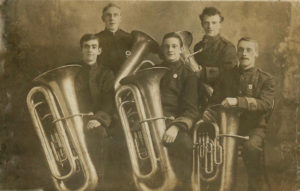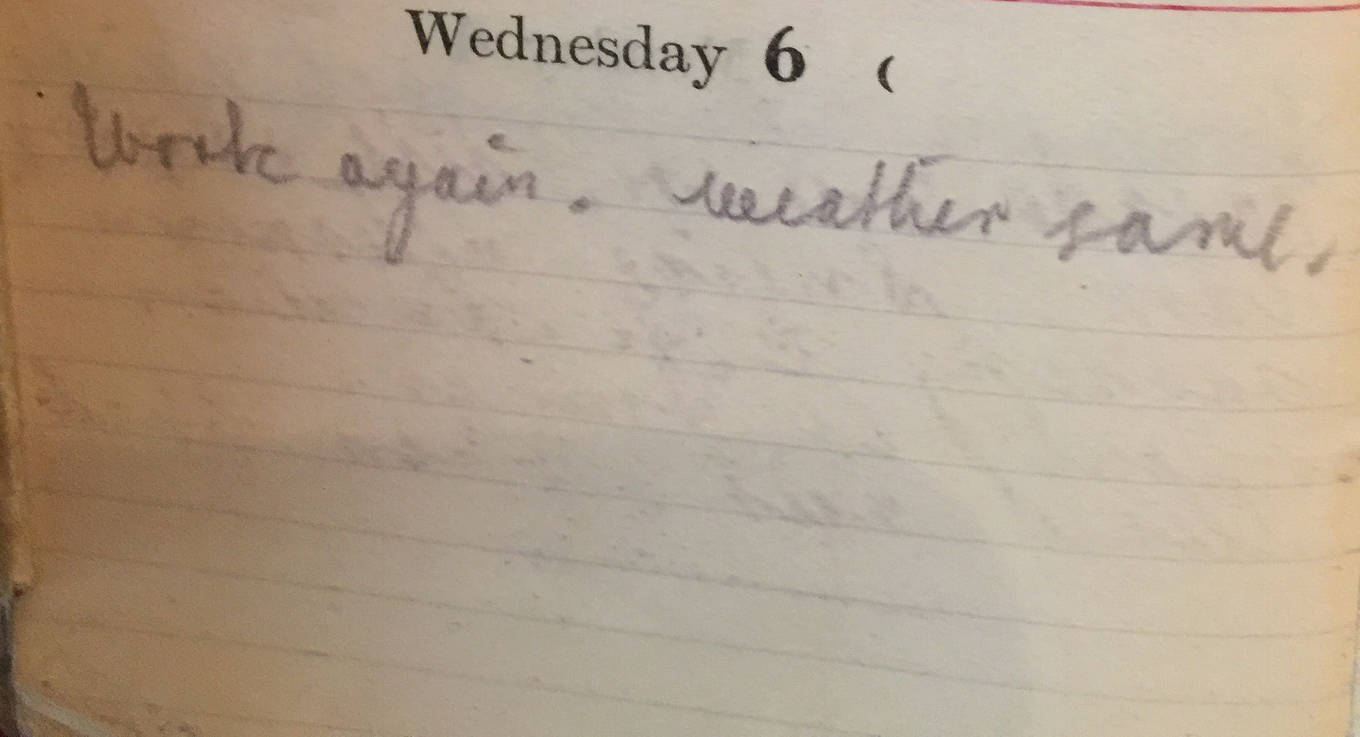Wednesday March 6th, 1918
Work again. Weather same.
Conscription
Over the course of the war, 4.9 million British men enlisted, representing almost 23% of the male population. This number excludes more than 3 million Empire and Dominion soldiers and those that served in the Labour Corps.¹ Initially service was voluntary, with 2.47 million signing up by the end of 1915 encouraged first by Kitchener and then the Derby scheme.
However more and more men were needed as the war progressed. Therefore conscription was introduced in the form of the Military Services Act. It started in January 1916 with the conscription of single men and childless widowers aged between 18 and 41. Within months the Act was revised, extending conscription to married men. Then, in April 1917, exceptions to conscription (reserved occupations and entrance criteria) were reduced. In summer of that year, the net was stretched to cover British citizens in allied countries and allied citizens in Britain. At the beginning of 1918, exceptions were further reduced and by April, the maximum age for conscription was increased to 50.
Fitness
Insatiable demand was one issue, the other was supply. There was a constant tension between supplying troops in the numbers required and the fitness of these troops to serve.† Over the course of the war, acceptable medical criteria were altered. A simple example is height. To stem the number of volunteers in the early weeks of the war, the minimum height was raised from 5′ 3′ to 5’ 6” and then back down again in November 1914. It was then lowered to 5’ 2” in July 1915. Bantam battalions were set up to accommodate those of even shorter stature.¹
National Services Medical Boards examined over two million men in the last 12 months of the war, assigning their fitness for service to the four grades I (A) to IV (E).³ The results raised interesting questions of the correlation between health and class that were subsequently studied.
Jay Winter noted, ‘There were, of course, men of all social classes in all four grades, but the correspondence between class, stature and overall health was too striking for the medical service boards to miss… They applied a standard devised by the noted anatomist Sir Arthur Keith to describe the relative fitness of men from different localities and occupational groups. Sir Arthur’s optimal cohort was formed by 1000 Cambridge undergraduates whose fitness varied as follows, 700 in grade I (A); 200 in grade II (B); 75 in grade III (C) and 25 in grade IV (E). If this distribution had described the fitness of the eligible male population of Britain in 1917, 70% of all recruits would have been in grade I. Instead there were only 34% nationally in group I (A) and this was the national average’.²

It is worth pointing out, that by late 1917, there were already millions of men serving, therefore the subject population was unrepresentative of the population as a whole. However, to some extent the analysis is borne out by Frank’s extended family. His wife, Sarah Elizabeth, had three brothers. Abram, the oldest, was deemed fit for UK service with 27th King’s Liverpool and served in Ireland (Grade III / C). The youngest, Fred, served with the 818 Divisional Employment Company in Salonika then in Russia (Grade II / B). Willie, the middle brother, was unfit for service (Grade IV / E).³
13th (Service) Battalion War Diary – 6th March 1918 – No 1 Sector, Olasli
Battalion resting, cleaning and bathing.
References & Further Reading
¹ Chapter 1 by Ian FW Beckett in the book ‘A Nation in Arms’ edited by Ian FW Beckett & Keith Simpson
² Chapter 7 ‘Army and Society: The Demographic Context’ by Jay Winter. ‘A Nation in Arms’, as above.
³ Note, Jay Winter refers to Grades I to IV. The classifications A-E described in the post on February 19th are comparable but have an additional one ‘D’ – which covers those temporarily incapacitated by injury or illness who will be fit for reclassification into A, B or C within six months.
† Article on Australian medical examinations during WWI by Michael Tyquin in ‘History’ Vol 22, number 2



It is interesting to note that they wearing the armbands which were issued to men who were awaiting call up after enlisting under the Derby Scheme.
Which would make the photo a wartime photo
Thanks Charlie. I have modified the caption under the photograph to reflect your comments. Frank attested in December 1915 under the Derby scheme and was called up in July 1917 so the photo must date from that period.